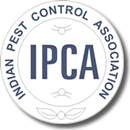Article by A.M.K.Mohan Rao* and K. Malla Reddy **
*Former Joint Director, National Institute of Plant Health Management, Ministry of Agriculture, Rajendranagar, Hyderabad 500030
**Past President IPCA, Dr. Sarup Pest Control Ltd., Fathe Maidan, Hyderabad 500001
While Indian cities remain vital economic engines, the rising wealth of rural India is a significant development bringing rapid urbanization and many of the rural areas are taking on characteristics more typical of real towns. 75% of new factories are built in rural areas and increased business in real estate, consumer appliances etc. contributing further to rural urbanization. Human populations on the rural fringe are now made up of people from a wide variety of backgrounds. The data on Indian districts indicate that 20 to 30 per cent of the rural workforce is primarily involved in non-farm economic activity. The expanded human settlements to agriculture land areas and increasing population density in urbanizing villages have led to special problems from pest animals and even their management, which were once routine in areas used for agriculture.
The increased human population due to rural industrialization, expanded human settlements in to agriculture land areas, climate change with poor infrastructure lead to poor sanitation and hygiene in these areas. Added to this, improper waste management measures made rural habitats conducive for the habitation of a variety of pests and vectors like mosquitoes, rodents, termites, flies, cockroaches, bedbugs, monkeys, pest birds etc. resulting in (i) structural and commodity losses, (ii) Nuisance value and (iii) diseases to humans due to their vector role. In the neo-urban areas, poor people often live in old, run-down buildings that provide ready access to these ever increasing pests impacting often the ill, debilitated, aged, or otherwise helpless poor. Further, most of the rural youth are school drop outs engaged in unskilled nature of the jobs in slaughterhouses, warehouses, garbage collection facilities, food-processing plants, demolition sites etc. exposed to pests/vectors viz., rats, mice, fleas, spiders or accumulations of animal excreta impacting public health.
1. Pest Management Industry
The objective of a modern-day pest and vector management is understanding the nature of the infested habitats and pest behavior to maintain a pest-free situation with limited chemical intervention and use of need based tools. In an example with termite management, Dhang, (2011) analyzed that structures with surrounding landscape, owned by the middle classes and constructed by developers have significantly more infestation than other types of structures. Such intrinsic information on infestation patterns is useful in designing sustainable pest management strategies and programs. As on now pest control business is confined to either urban areas or industrial units. Its ingress in to Rural India, a potential place for pest/vector problems, is negligible. In spite of this, the demand for pest control services grows at approximately 20% mainly due to variability in climate leading to pest population increase, growing customer awareness on health issues and various regulatory requirements in hospitality, Health, food and Pharma sector. Individual perceptions of pests as disease transmitting vectors gained attention in recent times with rapidly increasing vector borne diseases in the country. Key growth drivers of pest control services in India include (i) High GDP growth: at 7.7% growth in fiscal 2017 and 7.6% in 2018, (ii) Population growth: at 1.45 billion by 2028, (iii) Rapid urbanization with 68 cities with over 1 million people, (iv) Expansion of middle classes by reaching 91m by 2030, (v) Increasing hygiene standards and (vi) Government initiatives. As per NOVONOUS estimates, Indian Commercial Pest Control Services market is expected to grow at a CAGR of 22% till 2020. However, Indian pest control market is highly fragmented market dominated by large number of small local players. It is characterized by stiff competition within the industry with the launch of eco-friendly products and bio-pesticides and initiated customized services. The joint venture between two big players like PCI and Rentokil has a market size with annual revenues of Rs 550 crore, operate from 380 locations and employ 25,000 people. Such joint effort resulted in popularizing the services and increased customer education and awareness.
2. Reality in the structural pest management sector
2.1. Lack of competent professionals
The management of these structural pests did not gain much attention in policy and environmental analysis. There is a general perception that urban pest management is same as for agriculture pest management. The agricultural pest manager is often a trained professional, whereas in the structural pest management sector, the pest manager can be a professional, a para professional, or a rural dweller with no formal or informal training. While agricultural pest management is taught extensively at Agricultural University level, no effort has been made to educate undergraduates in the broader aspects of structural pest and vector management presuming that they will be able to apply their knowledge to structural pest management. Such perceptions resulted in inadequate attention on management of these pests/vectors by the policy planners. Further, nonprofessionals in the local bodies and private individuals manage the pest control although their technical knowledge and skills are highly inadequate.
2.2. Losses caused by structural pests/vectors
There was no systematic survey to assess the growth of this sector except some guestimates. One such analysis by Sulekha (2016) indicated about 4.0 lakh web searches covering 8 metros indicated an upsurge of 90% online requests for pest control in one year. Rodent control registered maximum growth of 809% in service requests across all cities surveyed, while termite control had witnessed a growth of more than 100%. Cockroach and bed bug control were the most searched categories. But the scenario is null in industrializing/urbanizing villages. The threat of malaria, dengue, chikungunya and possible entry of Zika made the Government to be vigilant on mosquito control, which is managed by non professionals in local bodies and Health departments. Trained professionals in sanitary and public health departments are almost nil. It is really sad that in spite of strong growth assessment of this sector, it remained as an unorganized sector till date.
3. Actions required for the promoting the Pest Management Industry
3.1. Developing data on the structural losses, disease incidence and technology
For any policy making/planning in the Government, the information on the losses caused by the pests and vectors is very essential. However, currently no quantified information exists as given above either on the quantitative/qualitative losses or on public health issues. Similarly, consolidated information on Pest Control Entrepreneurs also is lacking including the personnel they employed. In order to initiate any welfare or legislative actions, the data are very essential. Hence need exists for limited studies to gather data on pest and vectors, their prevalence, losses caused by them. Similarly, validation of emerging technologies and Standard Operation Practices (SOPs) does not exist. It need not be emphasized that the Pest Management Associations may play an active role in undertaking such activities on pilot basis involving the larger houses of Pest Management Industry to cater the needs of structural pest management in public places as well as inside the structures/houses.
3.2 Need for adequate legal/legislative provisions
- The Insecticides Act defined only “Pest” and did not include “Vector”. This has lead to only Agriculture department as regulating authority, although the department mandate is not urban or local body areas. When the Public Health authorities are implementing urban/village level vector control in public places through their personnel, they need to be identified as regulating authority.
- Laws on cleanliness are either absent or negligible in trash collection or disposal. In developed countries laws exist on levying heavy penalties on improper garbage collection. Such penal provisions need to be enacted in India also. At the same time garbage clearance and disposal measures need to be legalized for safer environments free of vectors like mosquitoes, rodents, flies etc.
- Legal provision needs to be amended for qualification for recognition to undertake pest management. Mandatory need of training under National Skill Qualification Framework (NSQF set up is needed and provision of minimum qualification needs to be abolished in tune with countries like USA or UK.
3.3. Role of Pest Management Associations
- Pest Management Associations may take up activities to create awareness at different levels, viz., Policy Makers, Supervisory authorities on pest management, Legislators, Technology Park authorities etc. on pest/vector problems, their impact, need to undertake suitable management measures involving pest management professionals.
- Massive awareness creation measures among public by the Associations to enable them to take the assistance of qualified professionals to undertake pest control.
3.4. Development of Skilled Manpower
With the current pace of increase in urban pest and vector problems, there is need to develop trained manpower in every urbanizing village. Presently Pest Management Industry hires raw candidates for both levels and straight away put them on jobs with little theoretical / hands-on-training. Industry has no way but to resort this due to lack of infrastructure. Lack of knowledge on Pesticide handling, their toxicity, risks involved lead to media reports of their adverse effects to both individuals and environment. We witnessed them in past and now witnessing off and on. Hence, need exists for developing competent skilled personnel in pest/vector management under NSQF for Pest Management Technicians, Supervisors as well as Entrepreneurs. Due to expansion of the industry in semi urban and rural sectors, opportunity for employment of technical manpower in the country is likely to rise exponentially. The stakeholders include Pest Management Industry, Industrial Parks and Commercial Establishments, Local Bodies, Public Health and Public transportation, Commodity and Structural Fumigation, Poultry, Aqua and Live Stock. Effort is also needed to introduce Diploma level courses in Structural Pest and Vector Management in UGC recognized educational bodies. At the same time the Pest Management Associations could establish MOU with such bodies to develop more trained professionals.
4. Current Efforts for Developing the Skilled Manpower and Up-skilling
- Demand driven short term training courses on structural pest/vector management based on Modular Employable Skills (MES) identified through Qualification Packs are being made and in consultation with concerned Pest Management Professionals and Scientists. MSS (‘Minimum Skills Set’) are being identified for gainful employment or self-employment in Pest Management industry.
- National Institute of Rural Development and Panchayati Raj (NIRDPR) under Rural Development Ministry is coordinating to develop various employable training programs to individuals, personnel of private sector and Central/State Institutions with NIRDPR as certifying and assessment authority. As on now National Institute of Plant Health Management is organizing one comprehensive 15 day course developed by first author.
- All training programs will be aligned with the national skill qualifications framework. Qualification pack (training outcome to meet particular requirement of pest management) prepared for each program approved by National Skill Development Agency. Eight Qualification Packs with a bunch of national occupational standard (nos) for each pest/vector/method etc, are to be prepared under this scheme.
- The target groups are generating more number of skilled technicians, supervisors and Entrepreneurs in structural pest/vector management. The structure of the course is schedule as per the professional requirements in structural pest and vector management and availability of resources at its premises. To improve employability of the candidates and reduce repetitive and avoidable assessments, combo and integrated modules would be introduced under the Scheme. Content of entrepreneur skill etc. will be included in Soft Skill module and soft skill module will be made mandatory.
- The training centers for the Employment Oriented Skill Development programs would be based on institutions coming forward for organizing the programs and possessing necessary infrastructure facilities as per the guidelines of Sector Skill Council. The Department for Centre for Skills and Jobs, NIRDPR is planning to be the nodal institution to coordinate with all training centers. Basic qualification would be 10th pass for Pest Management Technician and +2 for Supervisor level.








